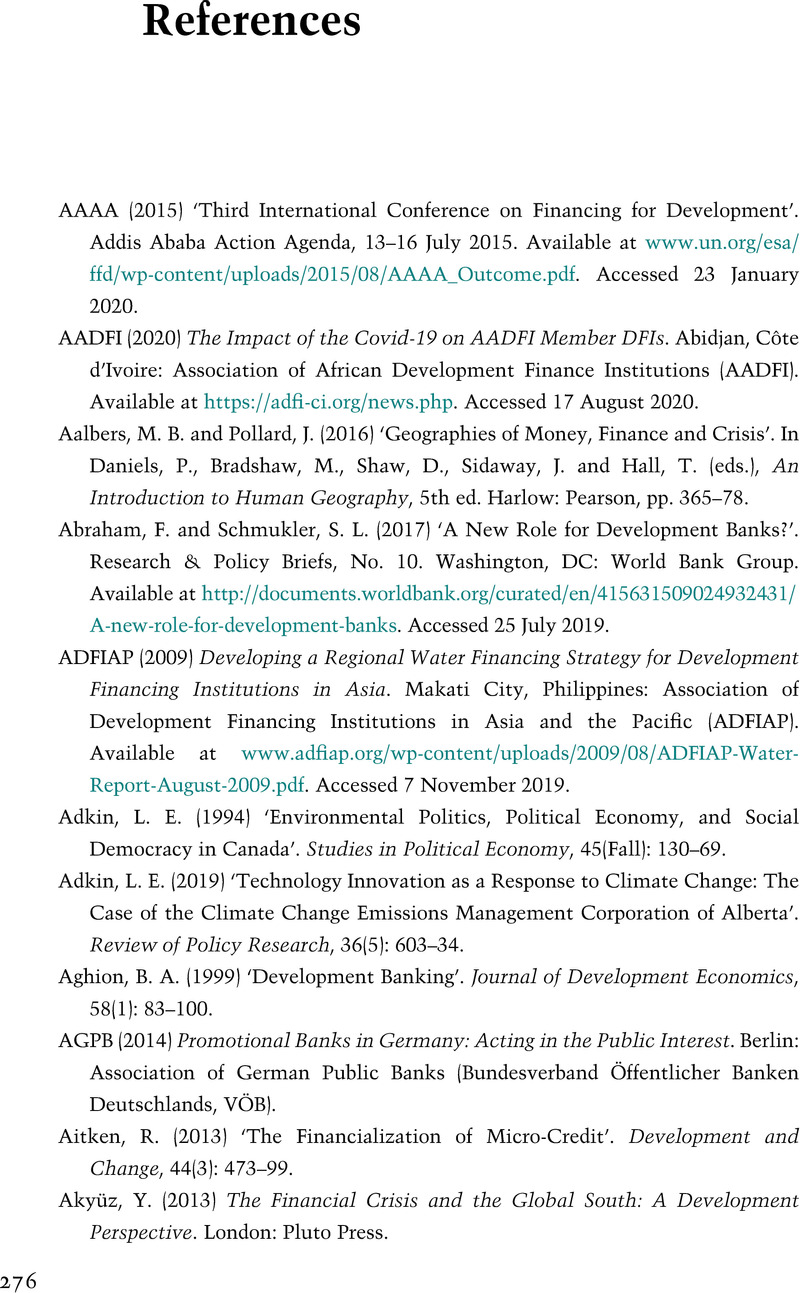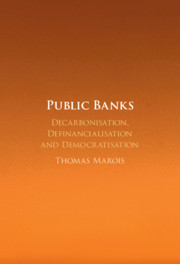Book contents
- Public Banks
- Public Banks
- Copyright page
- Dedication
- Contents
- Figures
- Tables
- Boxes
- Abbreviations
- Introduction
- 1 The World of Public Banks
- 2 Contrasting Evidence, Contending Views
- 3 Credible Legacies, Neoliberal Transition
- 4 Decarbonisation
- 5 Definancialisation
- 6 Democratisation
- 7 A Democratised Public Bank for a Green and Just Transition
- 8 Epilogue
- References
- Index
- References
References
Published online by Cambridge University Press: 21 May 2021
- Public Banks
- Public Banks
- Copyright page
- Dedication
- Contents
- Figures
- Tables
- Boxes
- Abbreviations
- Introduction
- 1 The World of Public Banks
- 2 Contrasting Evidence, Contending Views
- 3 Credible Legacies, Neoliberal Transition
- 4 Decarbonisation
- 5 Definancialisation
- 6 Democratisation
- 7 A Democratised Public Bank for a Green and Just Transition
- 8 Epilogue
- References
- Index
- References
Summary

- Type
- Chapter
- Information
- Public BanksDecarbonisation, Definancialisation and Democratisation, pp. 276 - 315Publisher: Cambridge University PressPrint publication year: 2021



